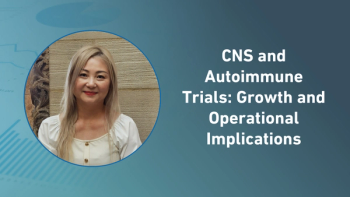
What Do COVID-19 Vaccine Timelines Mean For Clinical Development?
The pandemic spurred an urgency to innovate that improved clinical development in ways that should benefit the industry beyond COVID-19.
The astonishing speed at which COVID-19 vaccines and new treatments went from discovery to FDA emergency use authorization surprised the public. If drugs and vaccines take years to develop, how was the life science community able to create a novel vaccine and get multiple treatments approved in less than one year?
Media coverage of COVID-19 vaccine and treatment development reveals common explanations for how we delivered these vaccines and treatments so quickly, some of which are unprecedented global responses to an unprecedented pandemic. But other factors driving the accelerated development of these new products give us guidance for how we can improve clinical development, and specifically clinical trial timelines, beyond COVID-19.
Many of the solutions needed to improve clinical development were already available to researchers. Perhaps it took a pandemic to accelerate adoption of new clinical technology and processes. But patients can’t afford to go back to the way clinical trials were done before the pandemic. Our industry owes it to all the people who depend on us for new, life-saving medicines to apply the lessons we’ve learned through COVID-19 in our clinical trials moving forward.
So, what can we learn here? In an industry where nearly 80% of all clinical trials fail to enroll and complete on time, how were we able to get two vaccines and two treatments approved in a year? We have used literature reviews, interviews with subject matter experts, and our direct experience working on COVID-19 vaccine and therapeutic trials to answer those questions. Here’s what we have learned so far:
- We actually understood COVID-19 pretty well. SARS-CoV-2 is similar to SARS-1, which scientists have been studying since the SARS outbreak in 2003.1 The similarity in the pathogens meant scientists were able to quickly pivot to COVID-19 vaccine development. The messenger RNA platforms used to develop the COVID-19 vaccines demonstrated their effectiveness to develop vaccine candidates quickly and safely. Validating these technology platforms opens up the possibilities for future vaccine development.
- Studies attracted a huge number of volunteers. Across therapeutic areas, clinical trial enrollment has decreased dramatically during the pandemic2, according to a report by Medidata. But for COVID-19 vaccine trials, public support led to significant trial volunteer engagement, and patient recruitment and patient enrollment timelines shrank drastically. This dichotomy between COVID-19 and all other trials illustrates the immense impact patient enrollment has on clinical trial timelines.
- Traditional trial phases were collapsed for COVID-19. The slowest part of vaccine development isn’t finding candidate treatments but testing them. Traditional clinical development waits for a drug or vaccine to successfully pass a trial phase before moving on to the next phase. COVID-19 vaccines were collapsed into Phase I/II and Phase II/III trials without sacrificing rigor around safety or efficacy. Thanks to significant amounts of public and private funding, vaccine manufacturers were able to work on Phase I, Phase II, and Phase III trials, and manufacturing, all at the same time.
- The funding made available to manufacturers de-risked the development process. The funding was key, but the operational execution of these studies is the real takeaway for our industry. Seamless trials—combining two or more phases into one adaptive design study—require quick decision-making to adapt the study based on reviews of interim data. Pulling these trials off successfully requires trial sponsors and research sites to be in lockstep sharing data.
- Regulatory support accelerated the trial process. COVID-19 became the top priority for everyone, which impacted everything from ethics committee approvals to information-sharing between government agencies, and it ultimately accelerated approval timelines.
- The volume and breadth of innovation pursued by sponsors. Biopharmaceutical companies developed a wide array of vaccines and treatments across many different modalities (e.g., the first-ever mRNA vaccines were approved for EUA). Similarly, sponsors worked with others in the industry to embrace critical new technologies and innovate in how they implemented their trials. The pandemic accelerated adoption of technology used in clinical trial operations and data collection, and sponsors implemented virtual trials, seamless trials, mobile trials, remote data capture, remote monitoring—all ideas the industry has incubated for years were actually brought to life to combat COVID-19. As the think tank Faster Cures said in its report on biomedical innovation during the pandemic, “The emergency gave people license and a sense of urgency to try new approaches.” Not everything worked, but the important thing is that we were trying to innovate across the board. This commitment to innovation—in drug discovery and clinical trial implementation—is critical to remember as we move forward.
- Industry collaboration is at an all-time high. The pandemic forced the industry to move quickly, collaborate, and experiment together. Getting trials enrolled and completed required a much larger degree of collaboration between sponsors and research sites than the industry is accustomed to seeing. This increased collaboration allowed for faster and better problem-solving throughout the studies.
Some of these factors may be unique to a global pandemic, but there is plenty here to replicate beyond COVID-19 development programs. New clinical development funding mechanisms3, improved trial designs4, regulatory nimbleness5, robust collection of real-world data6—these are all areas where the life science industry will continue to evolve, and these have been discussed in other articles. The remainder of this article will focus on the last bullet point in more detail—how sites and sponsors can collaborate to run trials more effectively, which includes rethinking the way sponsors interact with sites before, during, and after a clinical trial.
Sponsors can lift the operational burden for research sites
In a pandemic, overwhelmed hospitals divert resources away from clinical trials, which puts an even greater burden on sites to work more efficiently. In response, sponsors have worked hard to partner with sites and identify technology solutions that lighten their workload.
For example, many sponsors began shifting to remote monitoring of source data during the pandemic. This means less in-person, time-intensive monitoring visits for sites (a necessity during the pandemic) and more time to focus on caring for patients and collecting data. Sponsors made reducing site burden a higher priority in the last year, which accelerated the adoption of technologies that fit into sites’ workflows and allowed sites to share valuable data with sponsors easily.
Sponsors began revising their protocols to allow for more virtual visits between sites and patients. Pfizer, for example, converted many of its studies to include virtual visits in 2020. In Pfizer’s COVID-19 vaccine trial, the company collected much of the data remotely. Participants needed to visit the clinic site twice to receive their injections, but throughout the study patients reported how they felt using electronic patient-reported outcome (ePRO) technology. Virtual and decentralized trials have been the subject of much discussion and innovation work in the last five-plus years. The pandemic created enough urgency that sponsors moved from talking to doing, and sites were eager to support the transition to more virtual or remote patient activities.
The pandemic demonstrated these technologies can reduce burden on research sites. When the pandemic is finally behind us, sponsors must continue to deploy these types of site-centric technologies that decrease the burden on research sites and drive value for sponsors.
Rethinking the site-sponsor relationship
The pandemic also created opportunities for sites and sponsors to work together differently. Traditionally, sponsors drive a lot of the innovation happening in clinical trials in collaboration with CROs and third-party vendors, while a site’s role in clinical innovation is usually that of an advisor. Sponsors run collaborative sessions with sites to review a protocol together and receive site feedback on ideas for improving the trial. Sponsors needed more than feedback from sites; they needed sites to lead the innovation that would bring trials back online. This kind of collaboration led to breakthroughs in how we think about enrolling and supporting trials.
This scalable model relied on innovative software and processes that made it easy to reach over 2,000 participants in a matter of months. More importantly, it required in-depth collaboration with Care Access to figure out how to operationalize such a novel trial. Recruiting volunteers from long-term care facilities, administering IP in a mobile setting, conducting numerous home visits—these innovative steps all required creativity at the site and sponsor levels. Lilly recently announced study results that bamlanivimab prevented COVID-19 at nursing homes by up to 80 percent for residents.
Since March 2020, R&D heads from top pharma companies have met regularly to eliminate technical and scientific barriers and accelerate clinical development. While created specifically as a COVID-19 response, the information-sharing will have downstream effects as leading sponsors share best practices for improving clinical trial performance.
Sponsors have had an opportunity to rethink their relationships with the various stakeholders in clinical development, particularly sites. As discussed above, sponsors were heavily focused on finding technology solutions that lifted the burden on site work. The Lilly and Care Access work exemplifies the steps stakeholders—in this case a sponsor and a site network—took to collaborate and address pressing challenges of clinical development during the pandemic; and in the process, rethink the relationship between site and sponsor.
Long after COVID-19 there will still be an urgency to innovate. If COVID-19 has taught us anything, the risk is not in attempting innovative solutions to solve clinical development challenges, the risk is in what happens if we try nothing.
As an industry, we have a lot we can learn from this pandemic. First and foremost is the power of collaboration—between sponsors, sites, patient technology partners, and CROS—to innovate and address clinical development’s largest problems.
Ralph Passarella is the Co-Founder and CEO of Reify Health.
References
- Petrosillo N, Viceconte G, Ergonul O, Ippolito G, Petersen E. COVID-19, SARS and MERS: are they closely related? Clin Microbiol Infect. 2020 Jun;26(6):729-734. doi: 10.1016/j.cmi.2020.03.026. Epub 2020 Mar 28. PMID: 32234451; PMCID: PMC7176926.
https://www.medidata.com/wp-content/uploads/2020/07/COVID19-Response7.0_Clinical-Trials_2020713_v3-1.pdf https://www.nature.com/articles/d41586-020-03626-1 https://www.theguardian.com/commentisfree/2020/dec/26/ten-reasons-we-got-covid-19-vaccines-so-quickly-without-cutting-corners https://www.statnews.com/2020/07/30/a-huge-experiment-how-the-world-made-so-much-progress-on-a-covid-19-vaccine-so-fast/ https://milkeninstitute.org/sites/default/files/reports-pdf/MI_SilverLining_012521.pdf
Newsletter
Stay current in clinical research with Applied Clinical Trials, providing expert insights, regulatory updates, and practical strategies for successful clinical trial design and execution.






.png)



.png)



.png)
.png)
